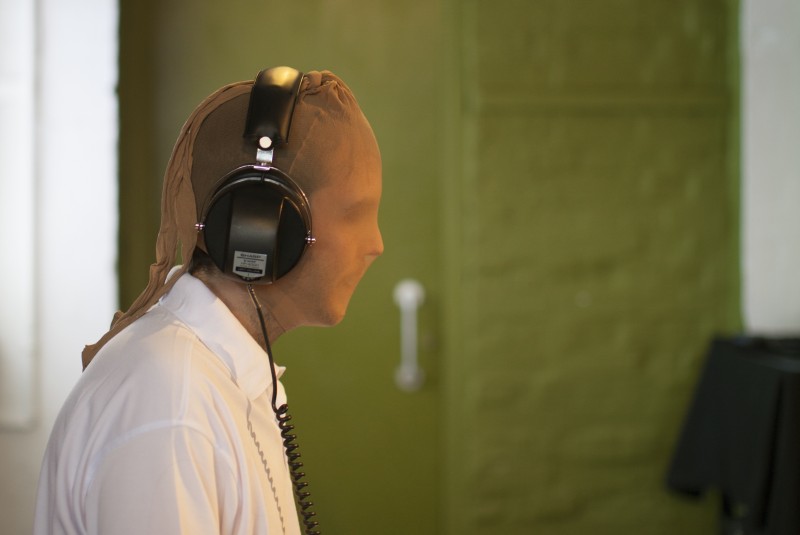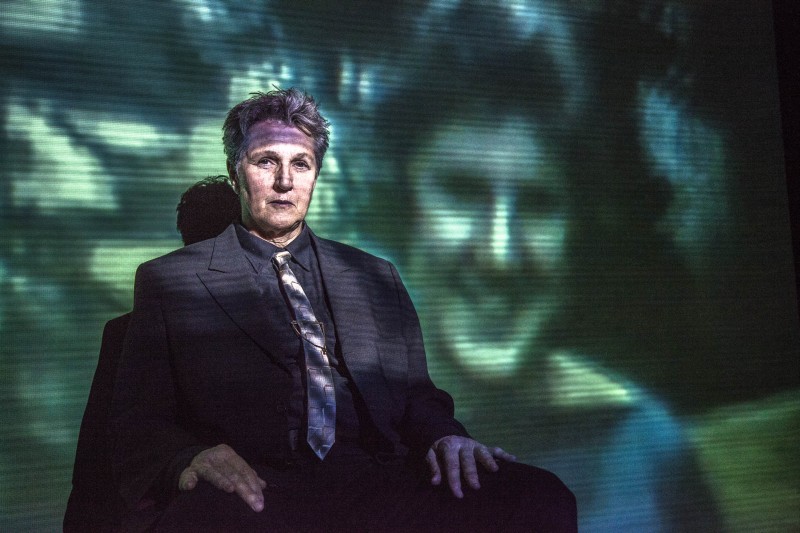 Taking as his starting point the confession tapes of Ted Bundy, Greg Wohead examines our glib fascination with the narratives of murder. That we have an appetite for stories of human cruelty and horror is evidenced by a brief look at the contents of any newspaper. Murder, sexual abuse, catastrophes and suffering make up the majority of lead stories, padded out with human interest, politics and business, with the whole edifice resting on a plump buffer of sports. This show turns that desire inside out, strips away the security afforded by the implied authority and careful editorial policies of the news establishment and confronts us with the naked source material behind the safe and processed stories.
Taking as his starting point the confession tapes of Ted Bundy, Greg Wohead examines our glib fascination with the narratives of murder. That we have an appetite for stories of human cruelty and horror is evidenced by a brief look at the contents of any newspaper. Murder, sexual abuse, catastrophes and suffering make up the majority of lead stories, padded out with human interest, politics and business, with the whole edifice resting on a plump buffer of sports. This show turns that desire inside out, strips away the security afforded by the implied authority and careful editorial policies of the news establishment and confronts us with the naked source material behind the safe and processed stories.
I experienced genuine terror, fear, sadness and disgust. I made a promise to myself that I would leave, I’d apologise to Total Theatre and tell them I couldn’t do it, I felt sick. This is an incredibly powerful show; it is also deeply ambiguous and disturbing.
The show is stark and spacious, it has an unhurried, methodical quality. The images within it resonate in this space. A pair of tights becomes a spectacle of suffering or the impenetrability of the mind of the killer.
Greg’s performance is delicate and nuanced, when he lends his natural charm to the portrayal of a serial killer the effect is harrowing. You enjoy watching him and he is a monster. Only, and this is a fundamental point, there are no monsters here. Both victim and killer retain their humanity, it is a person who does this to another person, we can see their actions but never know their thoughts, and as an audience you are left thinking, why do we return again and again to these stories?
The consumption (and by proxy experience) of trauma as a rite of passage, or perhaps just as entertainment, becomes a powerful thread. With the phenomenon of reaction videos there is no longer a mediator between the audience and the documentation of murder. We can choose to simply witness it ourselves and share that experience in the form of a comic-horrific video detailing our reactions and creating a secondary audience who can view only those reactions but not their source. The internet allows us to encounter and expose ourselves to the very worst things which people can do to each other. What happens when we choose to do that?
This is a seriously conflicting show, Greg does not take sides, representing both killer and in what might be the most awkward piece of audience participation I’ve ever seen, the victim. The facts and suppositions of a real life killing are presented with a light dead-pan. The killer’s own words are matter of fact. Then, in a chilling manner, Greg reveals the ease with which a skilled performer can lie to you, can fake reactions which you believed to be entirely genuine. He takes us to the same point, theatrically, as Bundy brought his victims: building trust, being nice, following the rules of politeness and then attacking the audience with a threat which consumed me with visceral desire to walk out. Does the show confront us with the hypocrisy of our own desire to consume stories of suffering in safety or is it another layer of predatory spectacle in the media circus of death? Buy a ticket and decide for yourself.

